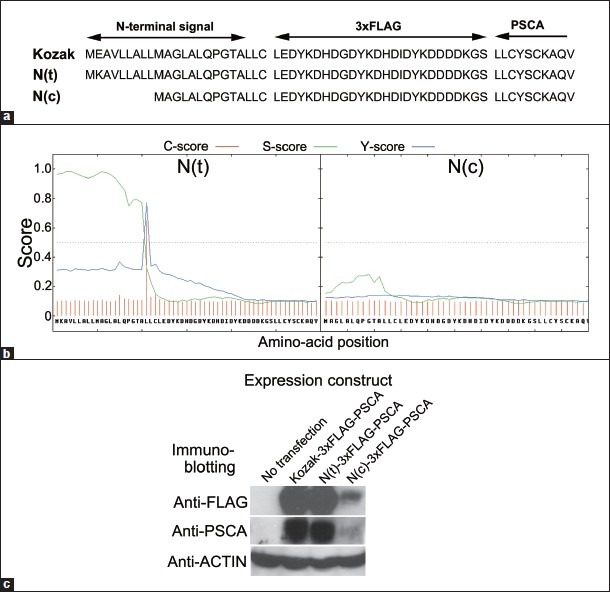Figure 1.

Consequence of T/C alteration at single nucleotide polymorphism rs2294008 in the putative translation initiation codon of the 3xFLAG-PSCA protein. (a) N-terminal amino acid sequence of three expression constructs for 3xFLAG-PSCA: Kozak with ACC ATG GAG, N(t) with ACC ATG AAG, and N(c) with ACC ACG AAG around the putative translation initiation codon containing rs2294008 (shown with underbars). (b) Signal peptide prediction for N(t)-3xFLAG-PSCA and N(c)-3xFLAG-PSCA proteins by SignalP 4.0 software.[34] The C-score is the cleavage site score and the S-score is for the signal peptide prediction, with high scores indicating that the corresponding amino acid is part of a signal peptide, and low scores that the amino acid is part of a mature protein. The Y-score is a derivative of the C-score combined with the S-score for a better cleavage site prediction than the raw C-score alone. (c) Western blot analysis on the 3xFLAG-PSCA proteins produced in HSC-57 cells to which the expression constructs were introduced. N(c)-3xFLAG-PSCA showed a significantly reduced amount when compared with N(t)-3xFLAG-PSCA. The protein was detected by both anti-FLAG and anti-PSCA antibodies
